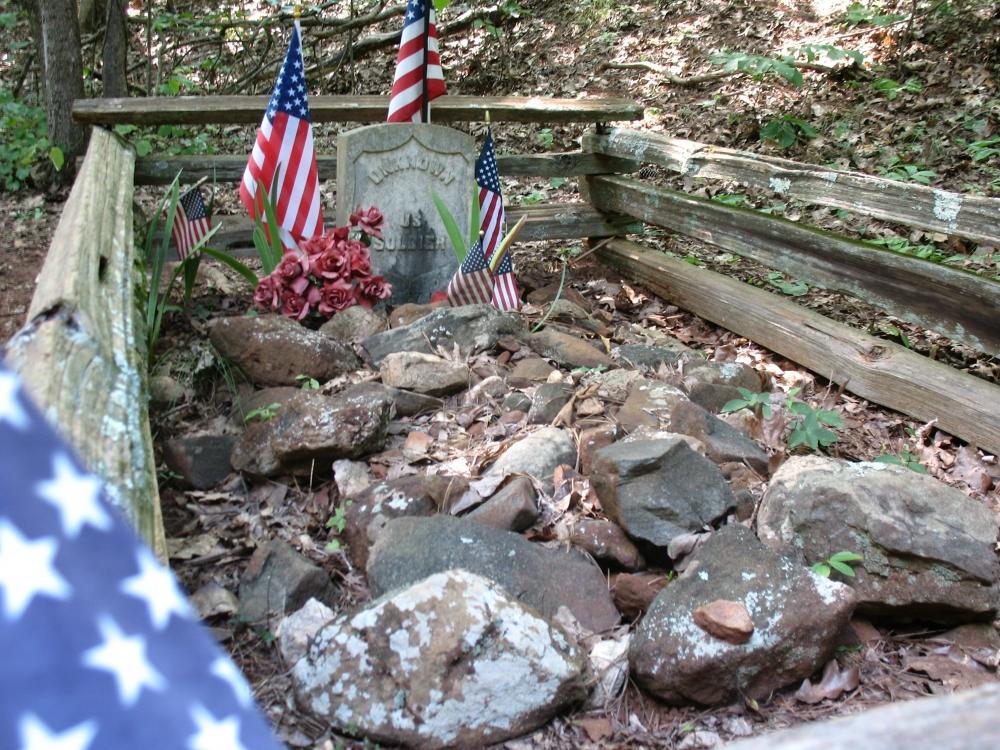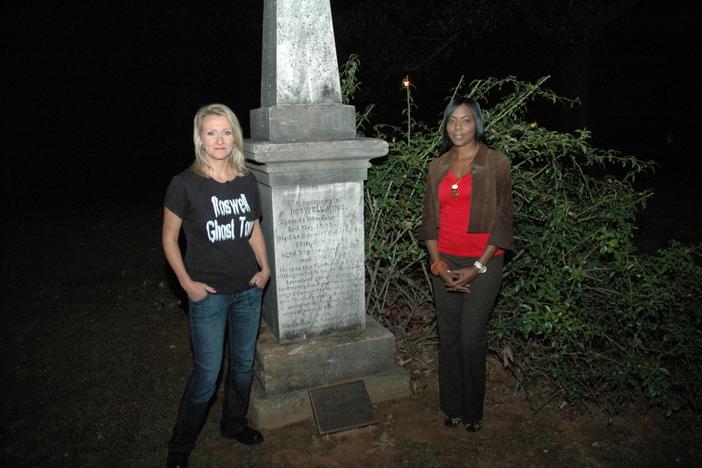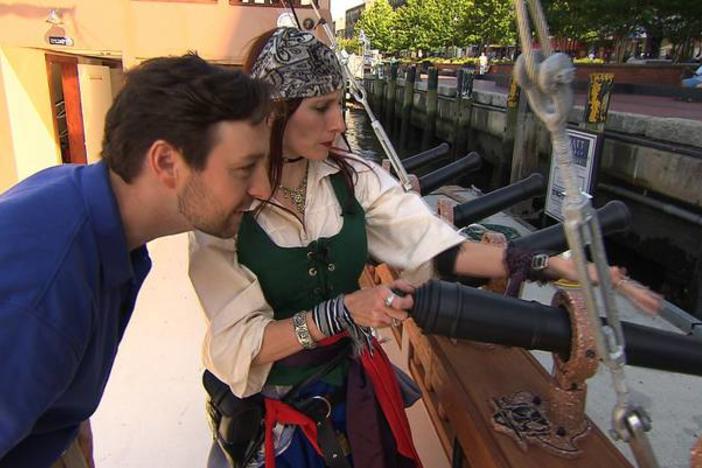
Section Branding
Header Content
Kennesaw's Unknown Civil War Soldier
Primary Content

During the American Civil War (1861-1865) thousands of men killed in battle were buried in unmarked graves. GPB Radio's Edgar Treiguts recently brought us the story of how modern scientists used DNA to identify a soldier buried at Kennesaw National Battlefield Park north of Atlanta. Click here to hear Edgar's story.
Here's a transcript of Edgar's story from www.npr.org:
MICHELLE NORRIS: Hundreds of thousands of soldiers died on Civil War battlefields. Many of the fallen were moved and buried in national cemeteries. But some lie in unmarked graves on the fields where they died. Edgar Treiguts of Georgia Public Broadcasting brings us this story on an effort to identify one soldier.
EDGAR TREIGUTS: On a recent sunny and hot weekend afternoon, Philip Whiteman leads a tour of the Kennesaw Mountain National Battlefield Park near Atlanta.
Mr. PHILIP WHITEMAN: Now, I said that at 8 o'clock in the morning on June 27th, 1864, the Union artillery opens up to kind of knock out these guns. But the Confederates were smart. They decided to not fire these guns.
TREIGUTS: The park volunteer is a Civil War buff, dressed in a full Union uniform right down to the canteen. He tells about a dozen visitors the details of the 1864 battle at Cheatham Hill. But it's Whiteman's reading of some soldiers' personal letters that brings home the emotion of the conflict.
Mr. WHITEMAN: And that's how you do that, just by learning about who they were, where they lived, something about their families.
TREIGUTS: Those soldiers have names attached to these letters. But missing are the stories of so many others, so many who are buried in unmarked graves. And that's something Civil War researcher Brad Quinlan can't let rest.
Mr. BRAD (Civil War Researcher): My great-great grandfather is one of those. It's one of those things that just drive you. It's important.
TREIGUTS: Soon after visiting the grave of his great-great grandfather in Vicksburg, Mississippi, Quinlan felt a call to action to help identify those unnamed. In Georgia, that would bring him to the Cheatham Hill battlefield and the mystery of the only unknown soldier buried there.
Quinlan takes me down a gravel and dirt trail and stops at a simple gravesite, surrounded by split-rail fencing.
Mr. QUINLAN: You see it's just rocks over his grave. He was not buried in a casket. So at 145 years later now, we're looking at probably not much left.
TREIGUTS: Quinlan traveled to Washington to study handwritten records from the National Archives. He cross-referenced that information and then returned to Cheatham Hill to walk the battlefield. Eventually, by process of elimination, he was down to one soldier from the 34th Illinois Infantry Regiment.
Mr. QUINLAN: We have one missing name of all those men who died.
TREIGUTS: And after a visit to check cemeteries in the soldier's hometown, Quinlan had the name of the lone Cheatham Hill unknown.
Mr. QUINLAN: Mark Carr, 34th Illinois, 21-year-old day laborer and farmer from just outside of Dixon, Illinois.
TREIGUTS: Quinlan says the shady gravesite has become an emotional symbol for many who visit the battlefield, including Mark Hanson from Minnesota.
Mr. MARK HANSON: You can't lose sight of this. You can't forget the people that fought and died for this country, both sides of it, you know, for what they believed in. And that's what to me makes very powerful - finding, identifying the people that did this.
TREIGUTS: According to the Civil War Trust, soldiers have been discovered on other battlefields. Two years ago in Franklin, Tennessee, a soldier's remains were found and reburied with honors.
But there's no way of knowing how many others might be buried on other battlefields. Officials at Kennesaw Mountain say they've not had contact with any distant relatives of soldier Mark Carr. They say there are no plans to move his remains to a nearby national cemetery.
For NPR News, I'm Edgar Treiguts in Atlanta.
Secondary Content
Bottom Content





